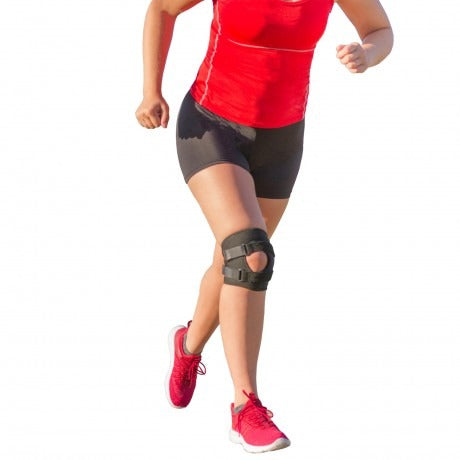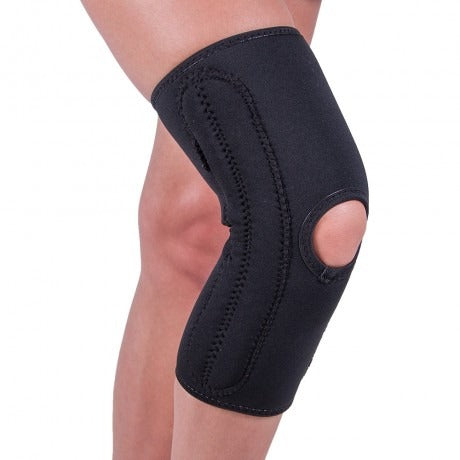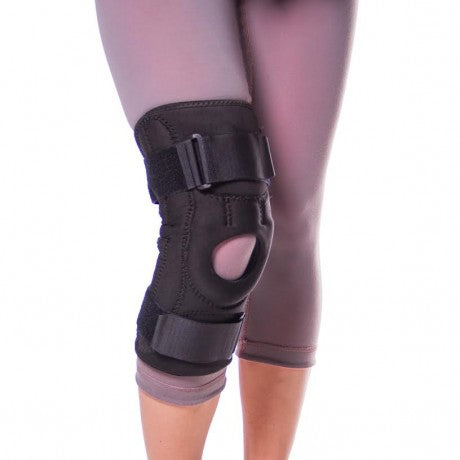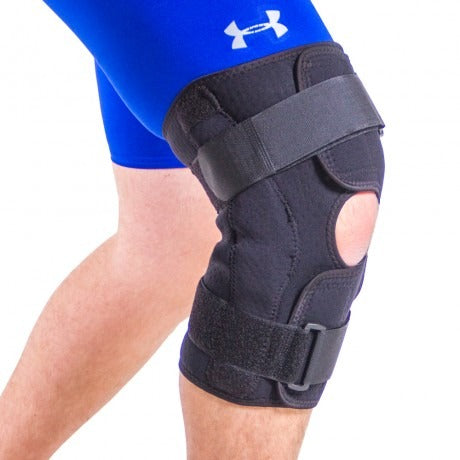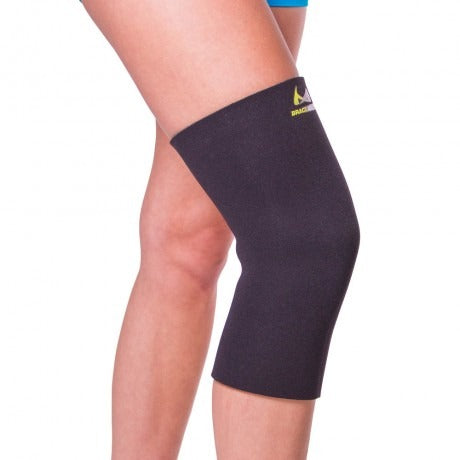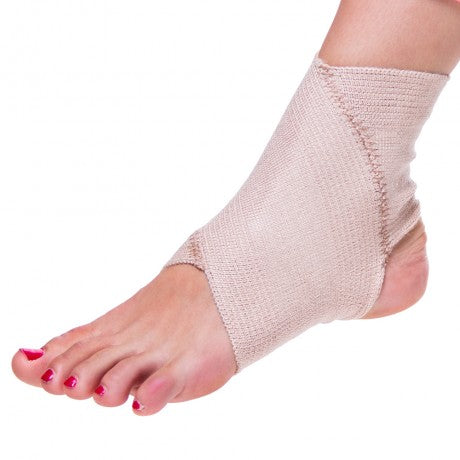What is Patellofemoral Pain Syndrome?
Patellofemoral Pain Syndrome (PFPS), commonly referred as runner’s knee or chondromalacia patella, is pain at the front of your knee or around your kneecap (patella). The pain originates where the back of your patella (kneecap) and femur (thigh bone) make contact. Knee pain typically increases when you run, use the stairs, sit for an extended period of time, or squat.
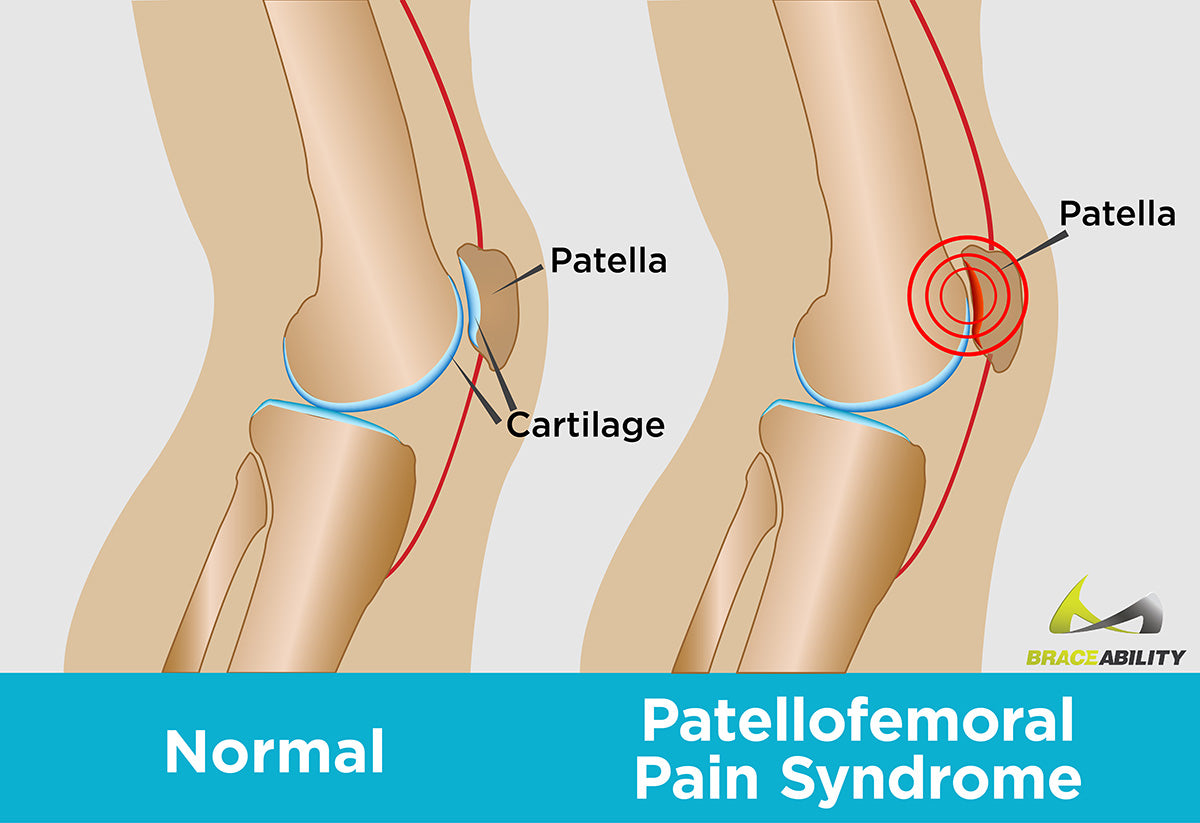
Patellofemoral Pain Syndrome Symptoms
- Aching and sometimes sharp pains around your kneecap
- Your knees are sore after sitting for extended periods of time
- Climbing stairs, squatting, jumping, running, and cycling trigger knee pain
- Knee buckling
- Popping or grinding sensations in your knee when moving
What Causes Patellofemoral Pain Syndrome?
- Overuse or sudden change in exercise routine
- Knee Injury
- Excess weight
- Your kneecap is not properly aligned (patellar tracking disorder)
- Muscle imbalance or weakness
Best Treatments for Patellofemoral Pain?
Patellofemoral pain syndrome is very common. There are many non-surgical treatment options that can be done to help manage patellofemoral pain.
R.I.C.E. Treatment
The acronym RICE stands for rest, ice, compression, and elevation. The main goal of RICE treatment is to allow your injury to heal by reducing any inflammation or swelling.
- Rest
Rest is the best medicine for patellofemoral pain syndrome knee treatment. Overusing and overloading your knees is a common trigger for many people with patellofemoral pain syndrome. Simply resting your knee until your pain has resolved is very beneficial.
- Ice
Applying ice to your knee helps reduce any pain or swelling associated with patellofemoral pain syndrome. Ice should be applied to your knee for about 15 to 20 minutes several times a day as pain persists. Make sure you do not apply ice directly to your knee, but instead try wrapping it in a towel or consider trying this cold therapy brace.
- Compression
The next step of RICE treatment is compression, which is aimed at reducing swelling. There are a number of compression braces available that help with patellofemoral pain syndrome. Otherwise, as an alternative to purchasing a compression brace, you can use an elastic bandage.
- Elevation
By keeping your knee elevated (preferably above the heart), you can reduce swelling by allowing extra fluid to drain. If you are sitting down or icing your knee, you should elevate knee or leg using pillows.
Medication
Taking anti-inflammatory drugs (NSAIDs), including ibuprofen or naproxen, can relieve many painful symptoms, including stiffness and swelling around your knee.
Exercises
There is growing evidence that exercise therapy for patellofemoral pain syndrome reduces knee pain, improves function, and helps with long-term recovery. Most patellofemoral syndrome exercises focus on strengthening your muscles that support your knees and help improve alignment. These exercises for chondromalacia patella also help with patellofemoral pain syndrome.
Physical Therapy
During an evaluation, your physical therapist may observe your alignment and test the strength of your thigh and hip muscles to find out if there is a weakness or imbalance that might be causing your patellofemoral pain. Your physical therapist can show you how to adjust your daily activities and exercise routine to reduce your patellofemoral pain.
Arch Support, Taping, and Braces
There are a variety of knee braces, arch supports, knee sleeves, knee straps, and kinetic tape on the market that help treat patellofemoral pain syndrome. Wearing a knee brace is a great way to stabilize your kneecap, alleviate patellofemoral pain, and protect against movements that might cause more damage.
Braces for Patellofemoral Pain Syndrome
There are many supportive devices and knee braces available at BraceAbility, which help improve patellofemoral pain syndrome. Sometimes, choosing a knee brace can be a little overwhelming. There are braces with holes in them, no holes, metal hinges, gel pads, some with straps, and some without. Check out our recommendations below for the best patellofemoral pain syndrome braces!
What Type of Brace is Best to Treat my Patellofemoral Pain?
-
Knee Straps for Patellofemoral Pain
A knee strap, like this patella band, sets directly under your patella (kneecap) and puts targeted pressure on your patella tendon, which helps relieve your joints of pressure and treats several knee-related problems. A knee band dramatically reduces pain caused by patellofemoral pain syndrome (runner’s knee or jumper’s knee), chondromalacia patella, tendonitis, or other knee conditions affecting your patella.
-
Solid Compression Knee Sleeves
A simple, solid knee sleeve can help you deal with multiple sources of knee pain, including patellofemoral pain. Solid knee sleeves have two major purposes. First, they provide the most compression, which greatly reduces inflammation and pain, while providing support to your knee. Second, they help control swelling around your knee and keep your blood flowing to the muscles that support your knee. Check out these solid compression knee sleeves, also available in plus size.
-
Open Patella Knee Sleeves
In comparison to our solid knee sleeves, our open patella knee sleeves are great if you are looking for all-day comfort and extra support around your kneecap. While open patella knee sleeves provide slightly less support than closed patella braces, they are lighter and more flexible for active people. The open patella design is typically recommended for people who have patellofemoral knee pain due to improper tracking of their kneecap. This knee sleeve has stays, which prevent it from rolling over and bunching up. The stays also provide medial and lateral support to your kneecap, which helps keep your kneecap properly aligned and in place. The open patella design makes it more mobile friendly if you are an active individual. Also, this open patella knee sleeve is great if you are overweight and experiencing knee pain but want to remain active.
-
Knee Braces With C-Shaped Buttress
A C-shaped buttress is a rubber-like ring around the patella opening, which helps stabilize your knee. A brace with a C-shaped buttress is especially helpful if you are in need of knee support for walking downhill, walking uphill, or running/walking on uneven surfaces, such as while hiking or trail running.
This hypoallergenic, lightweight knee brace is perfect for you if you are an active individual who deals with knee pain when walking or jogging. The open patella design of this short knee brace improves your flexibility and keeps pressure off your sore kneecap. Your popliteal (back of knee) is covered for extra support and compression.
This patella brace can ease pain from an improperly tracking kneecap. The open patella design of this brace for pain under your kneecap keeps pressure off your tender area. The C-shaped buttress of the patellofemoral knee support can be flipped for either lateral or medial support. And the tension of this brace for runner's knee injuries can be customized to your desired level of support and compression. This sleeve for patellofemoral pain also comes in plus sizes.
-
Knee Braces With U-Shaped Buttress
Knee braces with a U-shaped buttress, like this, are great for treating patellofemoral pain syndrome because they protect your knee joint, improve patellar tracking, and reduce inflammation around your patella. The U-shaped buttress supports your patellar joint and helps your kneecap track as it should.
-
Hinged Knee Brace
A hinged knee brace helps with a number of knee conditions, from general knee pain to trouble with the cartilage in your knee joint. The hinges help ease the amount of pressure on your knee joint and prevent any movements that might cause further damage to your knee. They also allow you to move about with a more natural range of motion.
This hinged knee brace includes dual-axis polycentric hinges on both the inner (medial) and outer (lateral) side of your knee. A plus-size version of this hinged knee brace is also available.
| What Brace Should I Wear for my Patellofemoral Pain? | |
Underlying Cause |
Recommended Brace |
| Runner's Knee | |
| Exercise | |
| Chondromalacia | |
| Excess Weight | |
| Muscle Imbalance | |
| Fallen Arch | |
Not sure what brace you need? No problem. Our customer service representatives are here to help. To speak with one, just call us at (866) 712-7808.

















